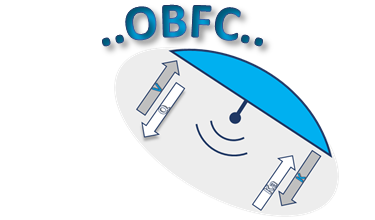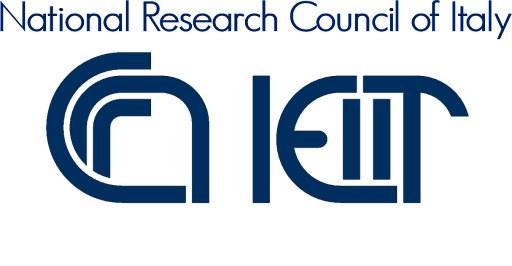
-
StatusCompleted
-
Status date2024-03-25
-
Activity Code5B.193
The study is relevant to the next generation broadband telecommunication service (VHTS) based on Single Feed Per Beam, developing an Engineering Model (EM) of a demanding innovative feed system operating from 17.7 GHz to 51.5 GHz providing simultaneously user and feeder link service.
The Feed system development has been addressed considering its application in operative scenarios:
-
Provision of multi-media services at high data rate.
-
Compatibility with small user terminals.
-
High/very-high throughput supported by payload on board a geostationary satellite.
-
European service area with focus on national mission needs.
-
multi beams system solution in Ka/K band for user link and Q/V band for feeder link.
-
Users coverage over Europe and Gateways concentrically aligned over the users coverage
-
Medium size satellite platform compatible with medium/large class of launchers
-
Board tracking system planned
-
Compatibility with innovative electric propulsion system platforms
-
Payload having a target mass of 400 Kg and a target power of 4 KW
The main design objectives have been:
-
To guarantee proper RF performance over an extremely wide spectrum range
-
Tunable approach to be easily customized for a given antenna system
-
Compact envelope to be accommodated in a feed cluster
At current state of the art a feed system involving the User and Feeder bands has not been developed.
The main design challenge is to guarantee in a compact envelope (cross-section within 45 mm) RF performances over so different bandwidths (K/Ka vs Q/V) in terms of proper radiation patterns, Ohmic losses, XPD, Isolation, tracking capability.
The development of a quadri-band RF chain able to perform either user link and feeder link represents a breakthrough to improve the overall system performance The evident benefit of the simultaneous combination of a K/Ka band user link and a Q/V band feeder link is the capability to reduce the number of reflector antenna systems on spacecraft.
The modular architecture of the developed feed system and the described tunability of RF performances show the hardware flexibility and customization for different applications in terms of antenna systems, coverage and operative bandwidths.
The feed system can be suitable for a wide number of potential applications thanks to the achieved tunability of the quadri-band subsystem (most critical component) and wide band optimized design of both recombination networks (K/Ka and Q/V); by replacing only quad-band S/S and leaving unchanged the back plumbing and mechanical I/Fs, the feed system can be adapted for different applications.
The feed system is composed by 3 main subsystems:
-
Quadriband Subsystem based on innovative coaxial OMJ;
-
K/Ka Recombination network based on asymmetrical self diplexing recombination component shared by ESA
-
Q/V band Recombination network based on wide band TAS developed components
The feed system design has been optimized according to the following frequency plan:
-
700 MHz for Quadri-band Subsystem with most complex components (Feed Horn + Quadri-band OMJ)
-
The full bandwidth capability for both recombination networks: 2.5 GHz in K/Ka and 5 GHz Q and 4.2 GHz V band
The main features of the feed system are:
- Optimization of smooth-wall quadri-band feed-horn operating in K/Ka/Q/V bands removing presence of spikes
- The tunability in K/Ka band of Quadri-band subsystems (most critical components)
- The wide band performance of the recombination networks has proved the potential hardware modular approach for the feed system
- Compatibility with tracking implementation in V band at minimum hardware complexity has been detailed
- Feed system has been developed with an envelope of back plumbing within the aperture diameter of a 45 mm horn
- The feed system manufacturing solution in slices realized by milling has been validated by the low measured Ohmic losses
- Good agreement between expected and measured results confirming manufacturing route.
- Experimental assessment of coaxial extraction approach that separates K/Ka band from Q/V band at a very low transverse envelope and preserving the symmetry of nominal excitation modes.
The selected modular architecture of optimized feed system is composed by 3 main subsystems:
-
Quadriband subsystem: it includes a smooth-wall quadri-band feed-horn and the coaxial OMJ which separates the K/Ka-band signals from the Q/V-band ones (user bands (K/Ka) are extracted (injected) in the external part of coaxial structure meanwhile the feeder bands (Q/V) are propagating in the inner coaxial part)
-
K/KA recombination network: it separates the K and Ka-band signals. It consists of the cascade of a recombination turnstile OMT that couples the signals entering at the four rectangular-waveguides connected to the quadri-band sub-system to a common square waveguide. The recombination turnstile OMT consists of a turnstile junction in square-waveguide loaded with four chamfered L-junctions. The K/Ka band polarization/frequency-diplexing network consists of an asymmetric OMJ with two longitudinal slots used to couple the K-band signals to two rectangular waveguide arms
-
Q/V recombination network: it separates Q and V band and polarizations. It is composed by the cascade of: an irises polarizer, a wide band OMT and a diplexer

The selected feed system baseline direct configuration has 6 active ports:
-
2 active ports for user link (1 polarization for K band and 1 polarization for Ka band)
-
4 active ports for feeder link (2 polarization for Q band and 2 polarizations for V band)
-
2 loaded ports for user links and no ports for tracking.
The Study is characterised by seven major milestones marking the development of the technical tasks:
MS1: System Requirement Review (SRR)
MS2: Preliminary Design Review (PDR)
MS3: Critical Design Review (CDR)
MS4: Manufacturing Readiness Review (MRR)
MS5: Test Readiness Review (TRR)
MS6: Test Review Board (TRB)
MS7: Final Review (FR)
The project Work Breakdown Structure (WBS) is reported in the following figure.

The project started in October 2020; the SRR was held in February 2021, has been completed in October 2023 with the Final Review.




